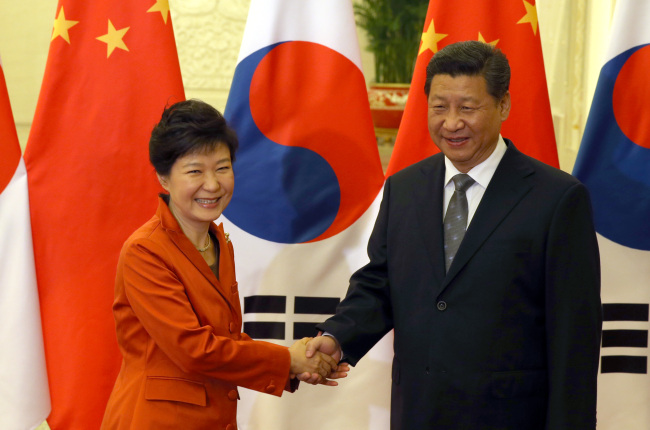China and South Korea announced on Feb. 25 the signing of a draft version of a bilateral free trade agreement (FTA). Under the pact, the two sides will eliminate their import duties for 91 percent of all product categories for goods from the other side within the next 20 years.
The English-language draft agreement revealed, however, that China conceded little in four key industries – LCD panels, petrochemicals, automobile parts and machine tools – meaning that the pact will have a smaller-than-expected impact in the near term on Taiwan, NewsNow reported.
Taiwan’s Ministry of Economic Affairs breathed a sigh of relief after having estimated in November 2014 that the pact would deal a NT$650 billion (US$20.67 billion) blow to Taiwan’s economy if China and South Korea completely eliminated their tariffs following the expected implementation of the FTA in the first half of 2015.
With the FTA’s details now known, many in Taiwan are accusing the government of using scare tactics by putting out the high estimate in November to push Taiwan’s own proposed trade deals with China.
But in fact, considering the intense head-to-head competition between Taiwan and South Korea in the China market, Taiwan cannot take the China-South Korea FTA lightly and must still carefully prepare to deal with its ramifications.
The ministry should immediately adjust its estimate of the pact’s economic impact on Taiwan based on the details of the released draft to provide a reference for Taiwanese companies and for future negotiations on a merchandise trade pact between Taiwan and China.
Tough Stance
Given China’s tough stance on protecting its four key industries in the Beijing-Seoul FTA negotiations, Taiwan is likely to face the same problem in similar trade talks with China and should take actions to address possible trade barriers.
In the LCD panel sector, for example, the two leading South Korean panel makers Samsung and LG have joined with Chinese counterparts to build several display plants in China, while Taiwanese panel makers are not allowed to do so because of local regulations.
That means China will still impose a 5 percent tariff on imports of Taiwan-made displays in the future, while South Korean panel makers will enjoy lower costs for their displays manufactured in China and gain market share more easily.
Taiwan is urged to ratify the proposed cross-strait services-in-trade agreement and continue its negotiations on a merchandise trade pact with China, which will become “sharp weapons” that can be used by local companies to make major inroads into the China market in the wake of the Beijing-Seoul FTA.


